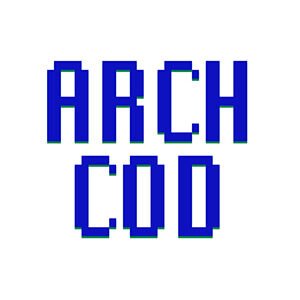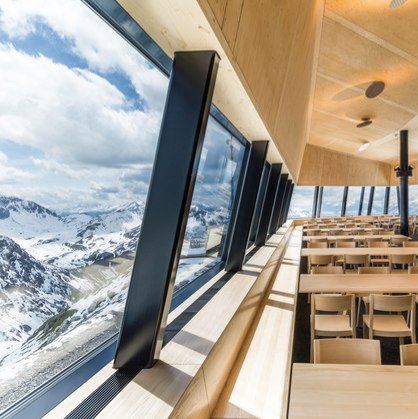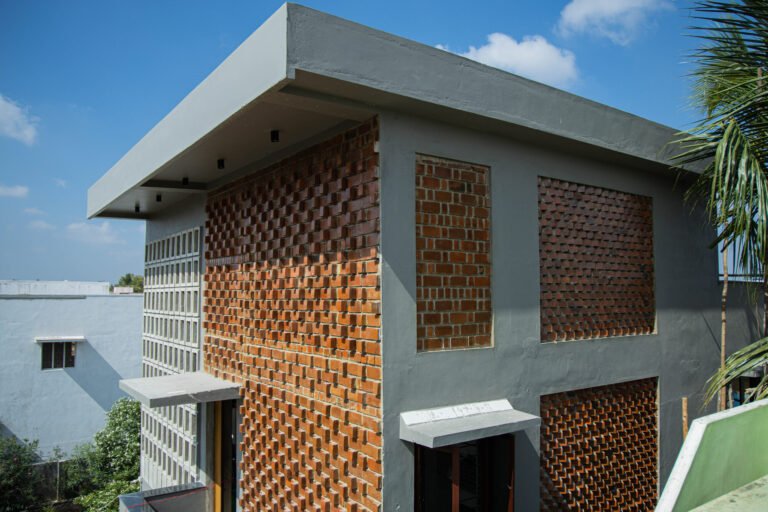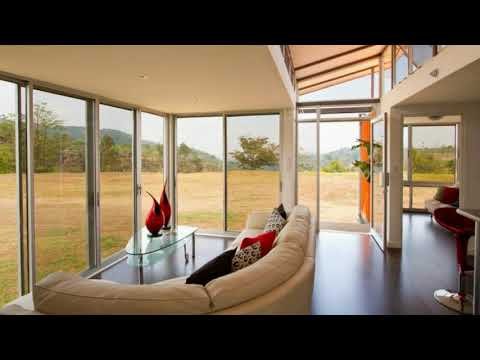Yihuang 1st High School Complex / Leeko Studio
Yihuang 1st High School Complex / Leeko Studio

- Area:
9395 m²
Year:
2020
Photographs: Yong Zhang-
Lead Architects:
Yikao Li

Text description provided by the architects. Since the well-known Dom-Ino prototype was proposed by Le Corbusier in 1914, it has been widely applicable to modern architectures mostly characterized by the interaction between horizontal floor slabs and vertical column grids. Even in the original open floor plan modular prototype, Le Corbusier left room for the interactive possibilities between the horizontal structure and vertical structure in construction details. While the vertical columns are required to be poured on-site, the horizontal floor slabs can be broken down into building blocks, which can be prefabricated in the factory and assembled on the construction site. This minimal, easy-to-build, and cost-effective space model not only makes it possible for mass production of space driven by the capital in the industry of architecture in the 20th century but also provides architects with a foundational frame for space design, paving the way for them to explore the infinite possibilities of space between grids and planes under appropriately confined conditions. Yihuang 1st High School Complex, a project recently completed by Leeko Studio, is designed based on Le Corbusier’s Dom-Ino prototype. Architect Leeko created an interlaced complex on campus with floor slabs overlapped on the 4500 square meters space. The complex responded to both the surroundings of the city and the campus with grid shifting and pivoting on the horizontal level, and it also fulfilled the different space spans requirements through overlapping and transferred structures at the vertical level. Ultimately, a competitive interaction between horizontal slabs and vertical column grids is formed to create an open and multi-functional complex on the campus.


The Overlapped Grids. The complex located at the southeast corner of Yihuang 1st High School is adjacent to Shiji Avenue to the East. To the south, an open basketball court lies between the complex and Jiefang Avenue. It is close to the main teaching area of the school at the western end and faces the football court to the north. Within this irregular quadrilateral site, to answer the strict requirements of high building density and the high floor area ratio, the first problem that architects need to solve is the irregularity of the site formed by the shifted orientation of the city gird and the campus grid. The Southern and Western boundaries of the site are parallel and vertical to Jiefang Avenue respectively. The Eastern boundary is parallel to Shiji Avenue, while the Northern Boundary is parallel to the campus’s inner roads, which intersect vertically with Shiji Avenue. The city grid based on the Jiefang Avenue and the campus grid based on the Shiji Avenue forms an acute angle. And how to smartly make use of this acute angle becomes the starting point for the architect to embark on his design.



The Dom-Ino system undoubtedly gives the architect a clue to addressing the challenge. The two sets of grids that exist in the site indicate that two Dom-Ino systems of different directions that overlap and interlace with each other could be applied for this project. Leeko’s sketch outlines this conceptually. One Dom-Ino system based on the campus grid constitutes the main body of the building. The other is revealed by the pivoted platforms on the 1st floor and the 2nd floor as well as their local column grid. The platform on the 1st floor integrates two grid systems, while the 2nd platform fully follows the city grid. Therefore, from the bottom to the top, it seems that a gradual transition from urbanity to campus architecture became identifiable, and this exactly echoes the dual interface of the site.

When the horizontal floor slab is pivoted to reveal the overlap of the two grid systems, the architect’s detailed design of the two sets of grid systems further reflects the different spatial characteristics of the city and the campus. The dominant column grid based on the campus grid uses conventional square columns, while the column grid follows the urban grid that uses cylinders. The former is standardized, efficient, and closer to the human scale and daily use, which, together with partition walls, form various functional spaces within the core area of the building. The columns of cylinder shape, featuring a directionless section, indicate the continuity between the campus and the open platform. Moreover, the cylinder-shaped columns are required to be of different heights because of the pivoting of the horizontal floor slabs to bring about the differences in scales and spaces, which is characterized by the guiding rhythmic colonnade and towering isolated columns. In the west-north and west-south corners of the complex facing the campus, double-height columns occupy two corners respectively. They, together with the spacious entrance stairway open arms to invite students. On the 2nd floor, the pivoted floor slab creates single-height open colonnades in three different directions, facing the outdoor basketball court, the football court, and the green campus area respectively. It provides the circulation spaces the additional functions for resting and viewing. Facing the two-way eight-lane Jiefang Avenue, the retreated classrooms allows the 5 through-height columns that support the gymnasium on the 3rd floor to be readable for its continuity in the vertical direction despiting the fact that they partially intersect the pivoted platform on the 2nd floor. This unconventional scale play undoubtedly constitutes a response to Shiji Avenue and formed a positive image for the complex in the urban environment.


The Transferred Structure. As a complex on the campus, the whole building accommodates a variety of functions, such as the library, computer room, laboratory, the school radio station, indoor basketball court, badminton court, parking lot, etc. Most of the functions can be realized by using column grids with a standard span, except for the indoor basketball court and badminton court. The special space requirements make the large span a problem that needs to be addressed. For a normal-scale ordinary campus building, it is undoubtedly a more feasible and suitable option to place a large-span space above the standard-span space to achieve structural transformation by the reduction of the columns.


4 reinforced concrete tubes containing egress stairs, elevators, toilets run through all the levels, forming a tubular structure system shared by the standard-span spaces and the large-span spaces. Although some mega-structure buildings are noted for their stunning span by using tubular structure, for a regular campus complex like this, supplemented by the frame structure is undoubtedly a more restrained choice. From the semi-basement to the second floor, a reinforced concrete frame based on standard span supports the horizontal floor slabs on different levels together with the above-mentioned tubular structure. In this homogeneous space created by a standard column grid, the semi-basement is used to satisfy the demand for campus parking. The computer room, the laboratory, the school radio station, the internet service center and other complex and trivial functions are accommodated on the 1st floor. The 2nd floor is used for the school library, which consists of an open shelf stack room and a small reading room. The standard column grid creates an open flowing space, but it can also be locally divided by partition walls to accommodate more specialized functions as required. The 3rd floor, available for the gymnasium, employs the steel structure system to allow for a large-span space. The outermost concrete columns are converted into concrete-filled steel-tubular columns, which together with the 4 core tubes support the upper steel truss. The serrated truss brings bright daylight to the gymnasium space, and at the same time makes this column-free space in addition to the daily indoor basketball courts and badminton courts, but also the auditorium to meet the needs of big school events.


The juxtaposition of multiple functions in the vertical direction not only means span conversion but also prompts architects to find a solution to the noise and vibration issues between “static” contents and “dynamic” contents. When the horizontal floor slabs below the 3rd floor are all conventional concrete beam-slab structures, the 3rd floor, which serves as a buffer between “static” and “dynamic”, adopts a more complicated ribbed steel beam concrete floor. The special sports-specific buffer layer is laid on the 3rd floor. Meanwhile, under the slab, the well-like space between the ribs is filled with sound-absorbing rock wool sheets to ensure that the reading space on the 2nd floor won’t be disturbed by the sports activities above. In the open corridor space around the library on the 2nd floor, the exposed ribbed steel beams add a more delicate sense of rhythm to the space.


The Open Platform. As mentioned above, the two Dom-Ino systems, through overlapping interlacing each other, create a competitive interaction between the horizontal floor slabs and vertical column grids of the Yihuang 1st High School complex. At certain moments, such as the space facing the urban environment or the stairs of the entrance corner, the columns gain a more iconic expression. While at other moments, the columns retreat behind, even being invisible due to the partition wall wrapping to emphasize the horizontal visibility of the slabs. The latter occurs on the north and south long side façade and the west short side façade of the building. The above three interfaces either face the green area or sports field on the campus. Thus, they also serve as viewing platforms towards the campus. It is conceivable that when a game is played on the open-air basketball court or a football field, the open platforms on the 2nd and 3rd floor of the complex are undoubtedly the stands with excellent views.

From the perspective of the ground, the designer further emphasizes the horizontal feature of the floor slab. Compared with the ground elevation of the campus, the elevation of the complex is raised to 1.6 meters. The students are required to walk up two spacious stairways to arrive at the 1st floor of the complex. At the same time, the building was also dug 2.6 meters down to form an open semi-basement with no envelope enclosure. Such design makes the ground level of the complex independent of the surrounding areas as if the complex is floating. The building appears to be not constructed on the ground. Instead, it looks like a man-made structure composed of different platforms stacked on each other vertically. It once again reminds us of the illustration given by Le Corbusier for the Dom-Ino prototype: The column base and shadow emphasize the architectural nature of the Dom-Ino system, making it more like the result of industrial assembly. In Yihuang 1st High School, the clear separation of the 1st floor from the ground gives the platform a greater sense of freedom. In contrast, the pivoting of the 2nd floor creates a visual effect to highlight the relationship between the horizontal slabs and vertical columns: They are interdependent, yet struggling to break loose from each other. The pivoted design leads to space variations on different platforms, and the amplified local space can be utilized by the students flexibly. The single flight stairs between the floors enhance a sense of line and a hint of spatial interest.


Compared with the open platforms on the 1st floor and the 2nd floor, the platform on the 3rd floor is encompassed by evenly arranged white mansard metal grid structures. The almost semi-transparent appearance slightly indicates the sense of volume of the 3rd floor. The serrated steel truss of the gymnasium protruding from the horizontal roof is completely wrapped by white metal perforated plates. As a result, from bottom to top, from the white horizontal lines formed by the edge of the floors to the vertical columns retreating behind and even partially hidden by the interior partition walls, the slender white perforated metal facade and the translucent interface formed by using the same material for handrails, the white wall enclosing the room and the partial glass curtain wall, the complex building provides a rich and open architectural image for the Yihuang No. 1 Middle School campus. If it is said that many buildings adopt the Dom-Ino prototype by complete unification of the floor slab, column grid and enclosure often became an efficient tool for space production, making it lose the potential of space, then the Yihuang 1st high School complex shows the rich possibilities contained in the Dom-Ino prototype through the competitive interaction between the horizontal floor slab and the vertical column grid and the superposition of the vertical interfaces with different transparency.








